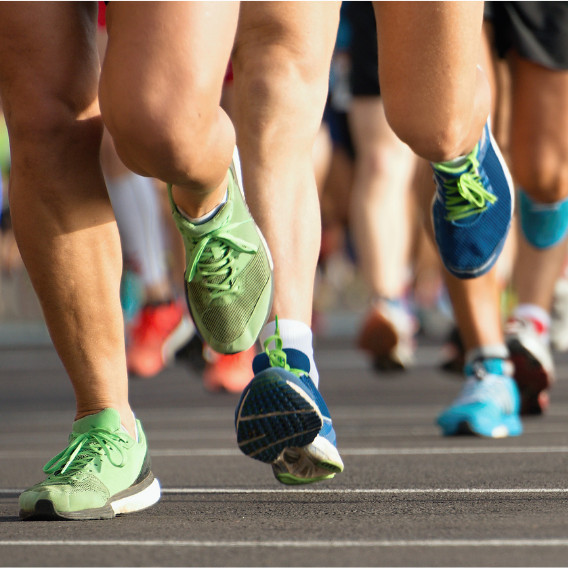How to Shift Your Shin Splints
How to Shift Your Shin Splints
you have been running for a while you have most likely heard of shin splints aka Medial Tibial Stress Syndrome (MTSS).
What are shin splints?
Shin splints are defined as exercise-induced pain along the side of the (bottom third) of the shin bone (the tibia).
Shin splints are caused by the repetitive stress of your bodyweight loading your leg during running. (1)
One of the characteristics of shin splints is that you can provoke pain by rubbing the side of your lower shin.
Shin splints in runners are one of the most common injuries with 35% of new runners being likely to develop the condition. (2)
The jury is out on what happens physiologically, but most researchers agree that the cause is either swelling of the tissues lining the bone due to sheering of the tissues, or a local bone stress reaction. (2)

What causes shin splints?
1. Changes in your training program
By changes, I also mean even just starting a new training program. If you are new to running and start having pain on the front side of your shin, you should adapt your training accordingly.
2. Increasing your distances too quickly.
If your training plan isn’t quite right for your current level of fitness then you might be running too far too soon for your abilities.
The same goes if you are not following a plan at all and just going out there and running. You should be tracking your runs and progressively building on the distances gradually.
3. The speed of the run is also a contributing factor to getting shin splints.
Running quickly on undertrained legs is asking for trouble. Speedwork is usually for intermediate runners and this should also be planned gradually.
4. Running on a hard or uneven surface. This might come as a surprise, but it’s a big one!
Take note of how you feel after your run on a particular route. I have a client who ran the route (for safety reasons) 3 times a week every week for months.
It turns out that her shin didn’t like the camber on the road. (we fixed that by getting her to run counterclockwise every other run).
Equally bad as the slanting camber, is running on sand. Sand makes running harder and strains your body, even more, so make sure it’s not the surface that is affecting your shins!
5. Not training in proper running shoes
Running shoes make a huge difference. The support that your feet and all of the soft tissue structures in your lower leg get from proper shoes is worth the investment.
6. Foot arch irregularities.
If you have flat feet this could mean that the load of your body weight going through your feet doesn’t follow the normal patterns and put stress on your shins.

7. Being overweight
If you are new to running and are overweight, you have to pay particular attention to how you train to avoid getting shin splints. Carrying extra weight will put pressure on your unconditioned legs leaving them vulnerable to getting injured.
The story of Emma’s shin splints:
Emma’s story is typical of that of a runner with shin splints.
Emma started running 3 months ago and started getting dull pain on the bottom third of her shin bone.
She often had pain in both legs and was worse to the touch or rubbing on the inside of the lower shin- even 3-4 days after her run. There was a bit of swelling in the same area.
Emma’s pain would start at the beginning of her run and would often disappear as the run progressed, only to start again at the end of the run when walking at home.
Eventually, as she kept running, the pain stayed with her throughout the run and for several hours afterward.

Emma’s treatment was standard, we followed basic procedures and used ice, compression socks, soft tissue release, gentle stretches, and modified her training. Emma swam to keep up her cardio. Here are more details on shin splint treatments:
How do you treat shin splints?
FREE ECourse
The Training Blueprint

Your guide on how to achieve
your goals with expert advice on
how to train, injury prevention
tips, and mindset.
Recent PAbout the Authorosts

HI Gritty Runners, I’m Caroline!
I am SO excited that you’re here! I’m super passionate about helping people to run far and having lots of fun along the way. I specialize in teaching others how to have a running body and a running mind to help them go the distance. My mission is to build your resilience so that you can be marathon ready. I pool together my knowledge from sport science, physical therapy and wellness coaching to keep you running stronger for longer.







